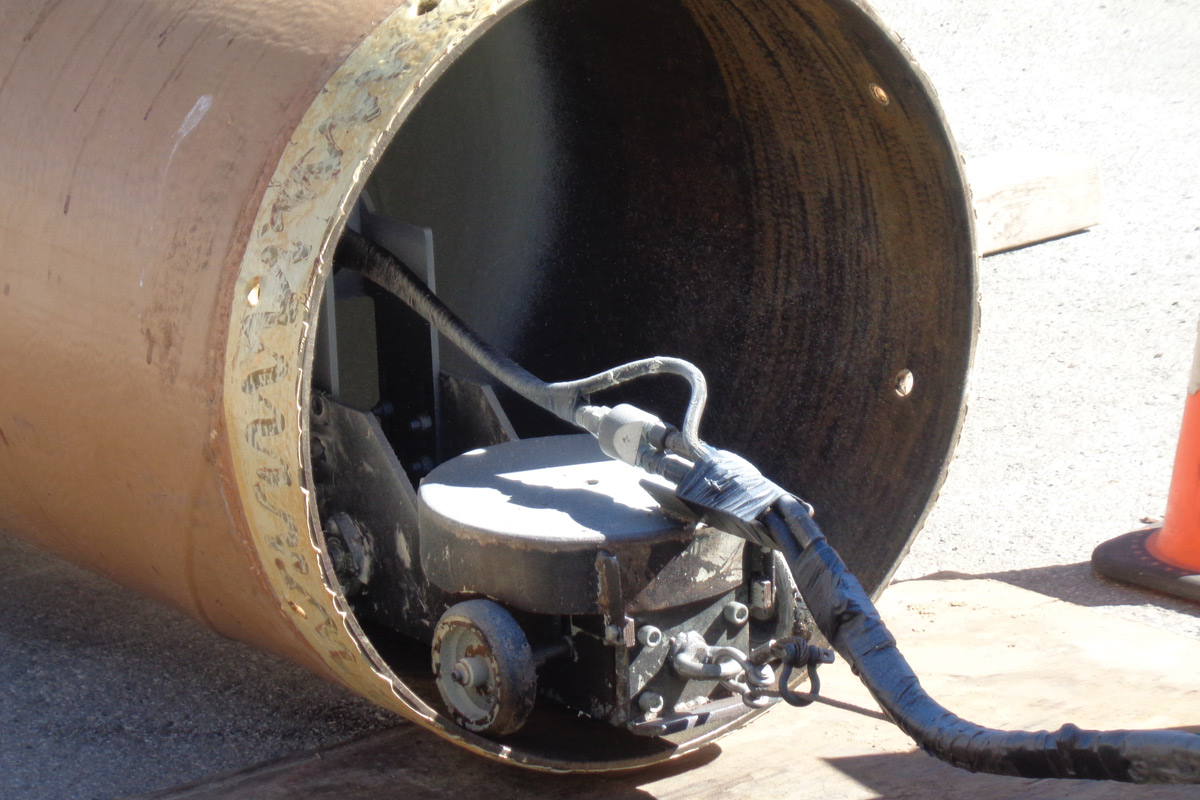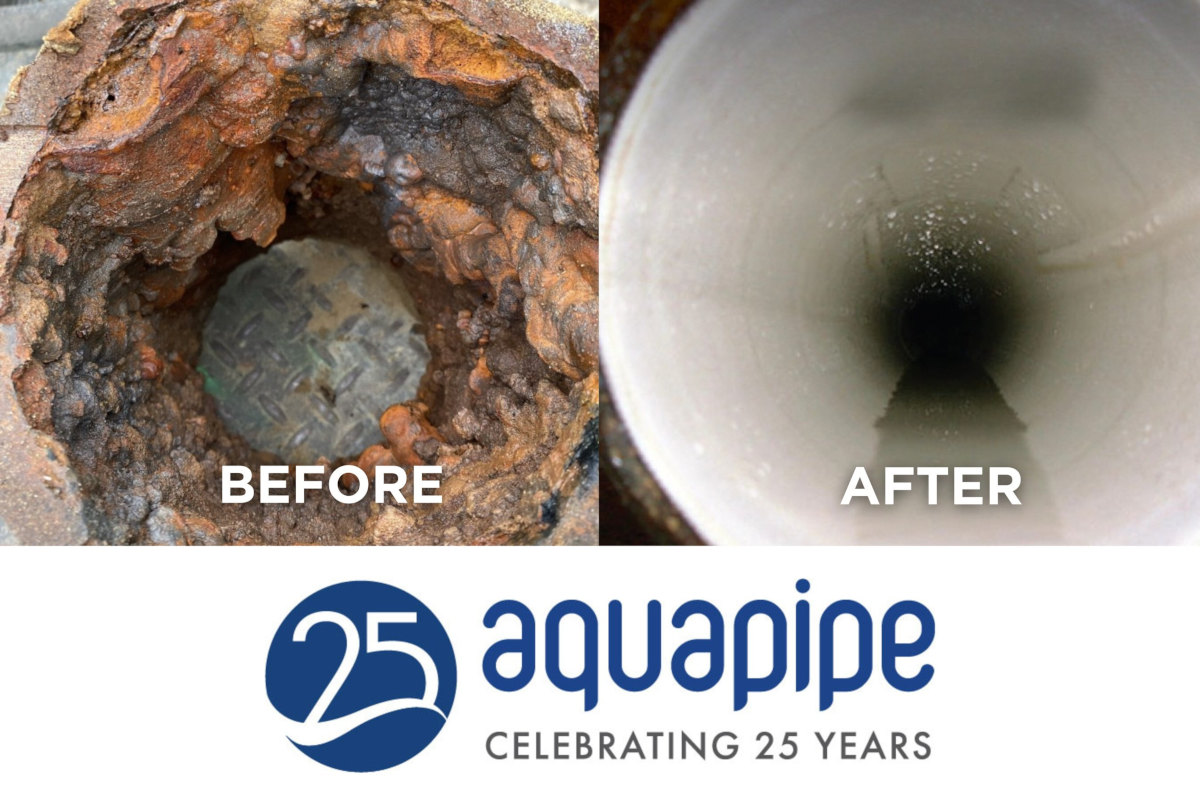
Baltimore Benefits from Emergency Storm Drain Repair
October 13, 2015
 The Harris Creek Storm Drain starts at Eager and Wolfe Streets and traverses roughly 8,000 ft in a southerly route through East Baltimore. The drain was constructed between 1882 and 1888 using brick and mortar and installed using traditional cut-and-cover, tunnel or cradle construction methods. The entire Harris Creek watershed services roughly 1,300 acres, with the large portion of that being dense urban portions of the city.
The Harris Creek Storm Drain starts at Eager and Wolfe Streets and traverses roughly 8,000 ft in a southerly route through East Baltimore. The drain was constructed between 1882 and 1888 using brick and mortar and installed using traditional cut-and-cover, tunnel or cradle construction methods. The entire Harris Creek watershed services roughly 1,300 acres, with the large portion of that being dense urban portions of the city.Following the collapse of a section of the drain located in Monument Street in 2012, Baltimore City DPW Storm Drain Engineering Section engaged in a contract to inspect, assess and develop a maintenance and rehabilitation plan for the 8,000-ft long drain. The DPW conducted video and laser profiling inspections, which indicated severe deterioration. The approximately 400-ft long segment of drain along Eager Street from Wolfe Street to Washington Street is a 10-ft diameter round section constructed of brick and mortar with a stone invert. The brick walls and crown are approximately 1.5-ft thick and the invert is constructed of granite cobble stones.
Inspection of this segment of the drain identified longitudinal and diagonal cracks and deformations to the cross section above the spring line, as well as missing brick and mortar in the crown and invert allowing soil to infiltrate into the drain. The most critical section located at the intersection of Eager and Washington Streets.
In January 2015, DPW requested RK&K to conduct internal hands-on inspections of the Eager Street location. Subsequent follow-up inspections occurred in February and March in order to monitor the condition of the drain. After subsequent visits, the deficiencies noted were progressing in severity, which indicated the drain was in great distress and could result in failure. For safety of the public, traffic was detoured and the street closed above the drain. Samples of the infiltrating water were collected from within the drain and tested. It was determined that the infiltrating water was potable water likely originating from a leak in one of the two 40-in. diameter water main that traverse the drain.
Plans, special provisions and construction cost estimates were prepared by RK&K for the emergency repair of the severely deformed 100-ft long segment of the storm drain using one of three structural repair options. These included: 1) cured-in-place pipe (CIPP) lining; 2) carbon fiber reinforced polymer composite (CFRP) lining; and 3) conventional open-cut repairs using cast-in-place concrete. Plans and repair options were presented to contractors in a pre-bid meeting held in February. The lowest responsive bid, submitted by Spiniello Companies, entailed the use of CIPP to structurally repair the drain.
A pre-construction meeting was conducted in March and Storm Drain Contract (SDC) No. 7790 was awarded to Spiniello, with a completion schedule of 60 calendar days. Working closely with DPW, RK&K assisted with the emergency repair by providing construction phase services, including construction oversight and inspection.

Inspection of this segment of the drain identified cracks and deformations to the cross section above the spring line, as well as missing brick and mortar in the crown and invert allowing soil to infiltrate into the drain.
Work commenced on March 25, with the investigation of water main leaks and the subsequent repair of a leak identified on one of the 40-in. mains. An internal flow isolation dam was installed in the 10-ft diameter storm drain downstream of the repair section and a temporary by-pass system installed to control base flow.
To access the drain for the installation of the 120-in. CIPP liner, an approximately 20-ft deep excavation was made and the top portion of the fragile brick drain removed above the spring line. Structural repairs were made to the drain using a CIPP liner system as soon as weather conditions allowed the inversion and curing of the liner system. During the installation of the access opening, it was determined that the segment of drain in this area was in a severely fragile state and an additional 50-ft of CIPP liner was installed in the downstream direction to stabilize the drain and aid in the closure of the access opening. Following the lining operations, grouting of the voids outside of the drain was completed from inside the repaired drain using pressure grouting. Approximately 3,900 gal of soil stabilization grout was used to fill voids and stabilize the soils outside of the repaired drain.
Closure of the access opening to the drain was completed by first installing reinforced concrete footers that would support and secure the 1.5-in. thick rolled steel closure section. The excavation and steel closure section was backfilled with concrete to the crown of the existing drain/closure section then a reinforced concrete slab was poured above the crown of the existing/repaired drain. The remainder of the excavation backfilled with stone, compacted and the roadway restored. Work on the project was on-schedule in June 2015 at a cost of approximately $2.2 million.
Keith Eysaman and Lucia Noya are with the engineering firm RK&K and Azzam Ahmad is with the City of Baltimore.




